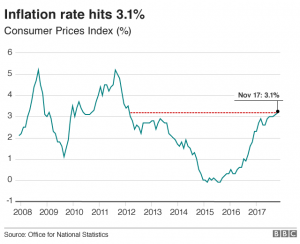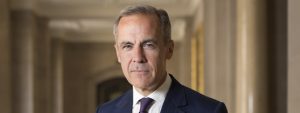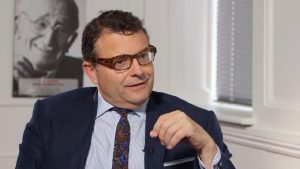Debates and Contemporary Issues
By Kyra Benforte
National and central banks have existed for hundreds of years in many countries around the world, but despite this long and illustrious history, there have been many arguments and controversies surrounding them. In different countries, particularly the United States and the United Kingdom, many of these controversies and disputes share similar roots. Over time these debates have focused on whether or not there is a need for national and central banks, the issues of inflation, a lack of regulation, and questioned stability. These issues have been represented at different times in both the United States’ and United Kingdom’s history but have failed to generate any grand change.
Necessity and Constitutionality in the United States:
The need for a national or central bank has been a contested issue for both the United States and England at different points in time. At the end of the 18th century and the beginning of the 19th, the constitutionality of the establishment of a national bank was contested by Alexander Hamilton, Andrew Jackson, James Madison, and Thomas Jefferson, among others. Hamilton and other supporters of the national bank believed that it would increase the capital supply in the United States, simplify the payment of taxes, and improve the productivity of the economy (Hamilton). Opponents of the national bank believed that it was unconstitutional. James Madison and Thomas Jefferson believed that a national bank would give Congress too much power and would only benefit the wealthy (Banning). Oliver Mitchell Wentworth Sprague, one of America’s leading experts on financial crisis, explained his ideology in rejecting the need for a central bank in the United States. In the early 1900s, Sprague was entrenched in the popular debates leading up to the establishment of a national bank. In 1909, Sprague aimed to “to discuss in a comprehensive fashion the many problems suggested by the proposal to establish a central bank in the United States” (Sprague 359). Sprague believed for a multitude of reasons that the United States would not be as successful as other countries like England in establishing a central bank that would benefit the country at large (Sprague 361). Sprague’s argument consisted of concerns over a fluctuating government surplus, our elastic currency, successful foreign exchange rates, and our loan system. The only plausible reason that Sprague could see for supporting a central bank would be to provide access to cash during a financial crisis, a situation that had been troublesome in previous years. However, Sprague did not guarantee that a central bank could solve this crisis, and therefore he continued to hold true to his idea that a central bank would not be strong in the United States.

Necessity in England:
Similarly, in England before the establishment of the Bank of England there were many debates concerning the legitimacy and necessity of a national bank. The debates in England were primarily concerned with the amount of power that the establishment of a national bank would give to the state. Supporters of the deposed King James and Tories, who primarily believed that wealth came from land, were fearful of the national bank. Both groups feared that “the government would be strengthened and their own influence diminished by the establishment of a national bank” (Goodman 18). Furthermore, merchants and the English upper class also opposed the creation of the Bank of England as they feared the bank could get a “monopoly over all of England’s banking business” and “make borrowing impossible by raising interest rates” (Goodman 19). On the other hand, the Whigs in England supported the Bank of England as they believed it would help to stimulate the manufacturing economy that they believed was vital for generating wealth (Goodman 19). Despite all of the pushback from the English, a bill to create the Bank of England was passed in 1684. In England, many citizens opposed the initial establishment of central and national banks, but despite these doubts and fear the Federal Reserve and Bank of England were established and still remain powerful.

Control of Inflation:
Inflation and the control of inflation rates are crucial for the economy and businesses are often at the forefront of economic discussions. Central and national banks are determining factors for inflation rates and their role has often been a source of debate among opponents of these banks. During the 1970s, in countries all around the world, inflation rates were rising. In the United States, the Federal Reserve was seen by its opponents as largely responsible for inflation. Opponents of the central bank claimed that money supply should not have been in the hands of the Federal Reserve for a multitude of reasons. According to Giampiero Cama and Giovan Battista Pittaluga of the International Journal of Social Sciences, central banks around the world can be incentivized to issue more money and thereby cause inflation “in order to allow the State to benefit from seignorage…to expand the money supply in order to extend benefits to its managers…to favour the electoral success of the ruling government” (Cama 238). Many believe that for these reasons central bankers should not be allowed to affect inflation rates in the United States. More recently, in England, citizens have questioned the Bank of England’s authority to set inflation rates. In February 2018, writers doubted the Bank of England’s ability to set interest rates, predicting inflation rates “is imperfect and it is fallible, relying on the collective wisdom of the eight men and one woman of the MPC. We are now in the position where, for a decade, we have relied on them failing to meet their principal target of inflation to keep us from being worse off” (Kilcoyne). Many opponents of central banks around the world explained that when concerned with inflation rates, central banks have failed. BBC published an article in March 2015 in which Professor John Quiggin of the University of Queensland Australia “says [in regards to inflation] ‘central banks have failed, disastrously, and admitting this would be the first step towards a sustainable recovery’” (Walker). Despite these reports by opponents of national and central banks, in a recent study conducted by the International Monetary Fund studying eight different central banks around the world, it was determined that national banks almost always achieve the inflation rates that they set for themselves (Bulif 19).

Lack of Regulation and Supervision:
One of the most important debates concerning national and central banks is the lack of regulation and supervision they have. In both the Federal Reserve and Bank of England, the banks’ powers have grown over time to increasingly high levels, that have caused uproar from the public. In the United States, the growing power of the Fed has caused the public to question how the role of the bank has changed over time. In recent years, the Fed has been criticized for having too much power over determining the president of the United States. In an article in the Washington Post, O’Brien went so far as to argue that the Fed has had an interest in supporting the economy when they approved of the political situation and doing the opposite when they did not favor the political situation (O’Brien). In England, critics have claimed that a lack of regulation has only increased after the most recent economic crises. The Bank’s powers have doubled according to Mark Carney, the governor of the Bank of England, and the power of the governor of the Bank of England has grown too strong (Elliot). Despite all of these concerns, no changes have been made to the power structure of the Bank of England or the Federal Reserve.

Economic Stability:
Central banks have not created strong economic stability as was one of their main intentions. George Selgin is the Director of the Cato Institute’s Center for Monetary and Financial Alternatives, an American libertarian think tank located in Washington, D.C, that aims to promote public policy based on “individual liberty, limited government, free markets and peaceful international relations.” Selgin believes that all central banks are inherently destabilizing entities, as he explains in his article “Central Banks as Sources for Instability.” According to Selgin, central banks were originally created by governments because they “favored the establishment of destabilizing institutions in the first place” and that the “modern tendency to regard central banks as sources of financial stability” is simply a myth, similar to the myth of barter (Selgin 486). Selgin uses the Bank of England as his first example to explain how it became a model for other central banks with the monopoly to issue currency. Selgin also explains that the Bank of England’s “fiscal origins and its founders’ corresponding unconcern for any broad macroeconomic consequences its creation might entail are evident” (Selgin 487). Selgin argues that the very nature of central banks and how they were originally created prohibits any central bank from being a stabilizing entity. Selgin supports his argument by showing that the economic crises in the United States since the creation of the Federal Reserve have been more grave than that of the time period before the Fed (Selgin 493).

National Banks and Bitcoin:
Most recently, the debates surrounding national and central banks have focused on their relations to cryptocurrency, specifically Bitcoin. Supporters of Bitcoin and other cryptocurrency, typically citizens that fear the government and the powers that it maintain, believe that the Federal Reserve and other national and central banks were created with the intentions of taking control of many aspects of daily life. David Golumbia, a professor of English at the Virginia Commonwealth University and Bitcoin expert, explains all of the different conspiracy theories regarding the Federal Reserve according to supporters and investors of Bitcoin. Conspiracy theorists believe that the main purpose of the Federal Reserve was “the control of credit, the control of the money supply, the ability to spend with increasing profligacy, and the means to steal continuously from the people by the debasement of our currency, on the part of the Federal Government” (Golumbia 13). Additionally, these conspiracy theorists believe that the Federal Reserve is simply a front for the state to “deprive ‘ordinary people’… of the value of their property” (Golumbia 15). Golumbia believes, as do many economists and scholars, that these conspiracy theories are unfounded and irrational and sometimes based on racism (Golumbia 17).

While over time there have been many disputes and debates concerning national and central banks all around the world, no major changes have been made to banking systems. Whether this serves as evidence to show that national and central banks maintain the majority of public support or whether our systems are too entrenched with these banking systems, I am unsure. However, I believe it is important to generate more discussion and conversation about the nature of national and central banks so that citizens are better able to understand and deal with economic issues in the future.
Works Cited:
Selgin, George. “Central Banks as Sources of Financial Instability.” The Independent Review, 2010.
O’Brien, Matt. “Yes, the Federal Reserve Has Enormous Power over Who Is President.” The Washington Post, WP Company, 13 Jan. 2015, www.washingtonpost.com/news/wonk/wp/2015/01/13/yes-the-federal-reserve-has-enormous-power-over-who-is-president/?utm_term=.7f73b462e7fc.
Cama, Giampero, and Giovan Battista. “CENTRAL BANKS AND DEMOCRACY.” Rivista Internazionale Di Scienze Sociali, 1999.
Golumbia, David. “The Politics of Bitcoin: Software as Right-Wing Extremism.” Forerunners: Ideas First.
Goodman, Halley. “The Formation of the Bank of England: A Response to Changing Political and Economic Climate, 1694.” Penn History Review.
Kilcoyne, Matt. “Debate: Should the Bank of England Scrap Its Two per Cent Inflation Target?” City A.M., 16 Feb. 2018, www.cityam.com/280750/debate-should-bank-england-scrap-its-two-per-cent-inflation.
Elliott, Larry, and Jill Treanor. “Inside the Bank of England .” The Guardian, Guardian News and Media, 10 Nov. 2015, www.theguardian.com/business/2015/nov/10/inside-bank-of-england.
Walker, Andrew. “Inflation Targeting Is 25 Years Old, but Has It Worked?” BBC News, BBC, 11 Mar. 2015, www.bbc.com/news/31559074.
Sprague, O.M.W. “Central Banks.” American Economic Association Quarterly, Apr. 1909.